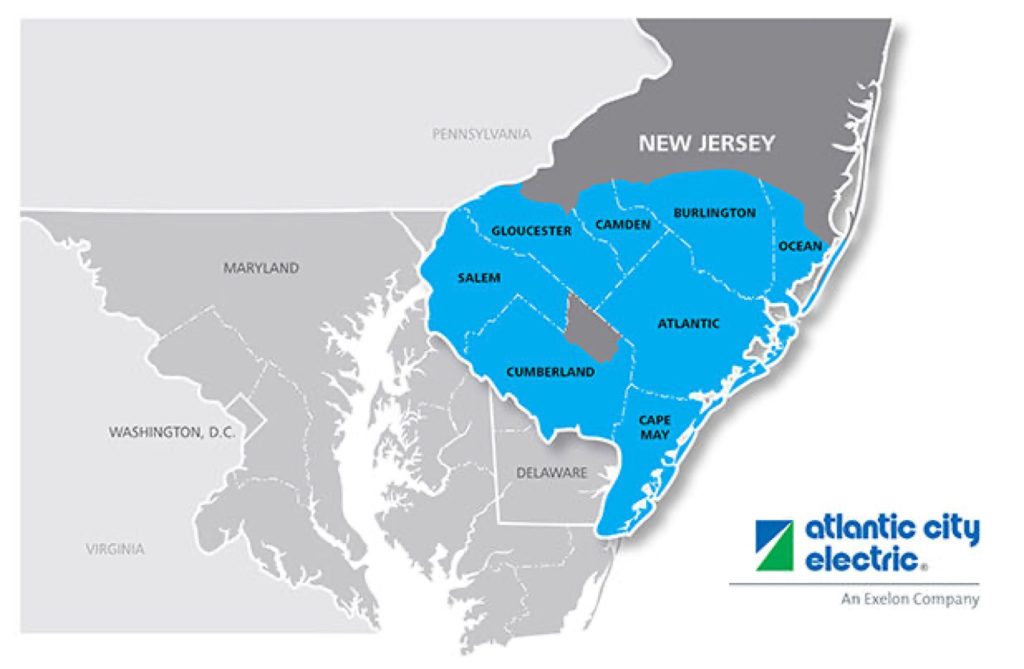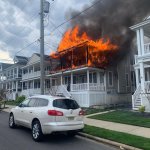COURT HOUSE – In a Feb. 7 press release, Atlantic City Electric (ACE) touted the fact that its customers had experienced “the lowest frequency of electric outages ever in 2022.”
ACE states that work performed to “modernize and upgrade the grid against increasingly severe weather” helped decrease the frequency of outages by 56% over the last 10 years.
ACE is talking about the transmission system of high-voltage power lines, transformers, and other equipment, as well as the system of lower-voltage lines that deliver power to homes and businesses.
The movement of electricity is the job of the grid. For ACE, the portion of the national grid that it worries about includes some or all of eight New Jersey counties covering about 2,800 miles in South Jersey, including all of Cape May County.
The modernization of the grid continues, and experience shows the work can be controversial. The installation of large steel transmission poles in 2016 became a major election issue in Stone Harbor. There was also opposition followed by compromise regarding the Cape May Substation Reliability Project announced in 2017.
The most recent example of grid enhancement is the move to what is known as a “smart grid” equipped with smart meters. The smart meter initiative that just saw these meters installed across the county is a step toward more efficiently managed energy use by customers and the power utility. It is occurring as part of the larger strategy of electrification of transportation and homes.
According to the U.S. Department of Energy, the grid, in a national sense, is made up of 7,300 power plants, hundreds of thousands of miles of high-voltage transmission lines and millions of miles of lower-voltage power distribution lines, with roughly 55,000 substations.
The national grid services about 145 million customers. It represents an interconnection of separately owned and operated sub-grids.
Unlike power grids in many countries, in the U.S., the grid is largely privately owned and operated within a regulatory structure set up by individual states.
The recent press release by ACE speaks to ongoing investments to reinforce the local energy grid, including the new Smart Energy Network. Over $100 million of the investment in a smarter local grid was part of an ACE investment recovery petition to the New Jersey Board of Public Utilities (NJBPU), which was approved and will result in about an 8% increase in the average home’s transmission costs on electric bills beginning this summer.
This will continue as the grid is fortified for its role at the center of a strategy for abandoning fossil fuels. The transition of power generation from fossil fuels to alternative clean energy sources like the proposed wind farms off our coast is part of the same overall strategy.
Recent controversial decisions by the NJBPU will allow transmission cables from the wind farm to cross municipal and county land to a grid interconnection point at the site of the former B.L. England generating station.
As clean energy sources develop as alternatives to fossil fuel for the generation of electricity, so the strategy goes, they will direct their power into a grid better able to withstand severe weather and which was sufficiently enhanced to accommodate a dramatically increased electric load. The load will be needed to support the transition to things like electric vehicles.
The task ahead is mindboggling and seldom seen in a unified plan. Modernizing the grid means upgrading most, if not all, of the miles of transmission lines, incorporating distributed energy sources, including energy generated in the individual home, increasing resilience, and building new lines for bringing energy from remote locations, like solar farms, to populations centers.
Much of this effort will be driven by state action through regulatory agencies like the NJBPU. The task is nothing short of reshaping a system that has remained largely unchanged for decades. How it will happen and who will pay for what through what means are questions without clear and definitive answers.
Another major concern is whether the grand strategy will happen in the right sequence. A recent report by PJM Interconnect, a regional transmission organization overseeing the movement of wholesale electricity across 13 states, might be considered a wake-up call for the future reliability of the grid.
PJM argues that existing fossil-fuel-dependent generators of electricity are “retiring” at a rapid pace due to government and private sector policies. This action is outpacing the construction of alternative clean energy sources and may lead to instability in the grid. This is especially so if demand continues to rise due to electrification of high-use items like light-load vehicles.
PJM warns of a potential for more frequent power interruptions not because of an aging grid but because that grid will see demand that the transition to clear energy sources cannot meet in time.
Grid modernization will play out locally through its parts rather than as an overall strategy. One example is ACE’s Upper Township to Dennis Township Reliability Project, which replaced transmission tower structures between Beesley’s Point and Ocean View.
The county can expect to continue to see what might be called micro-projects in grid modernization and to experience the cost of those projects reflected in user fee increases in electric bills.
One can only hope that a plan exists for how the current fragmented but interconnected national grid, with its transmission infrastructure serviced by as many as 3,000 companies, comes together in the right sequence to meet the needs of an “electrified” future.
Contact the author, Vince Conti, at vconti@cmcherald.com.








